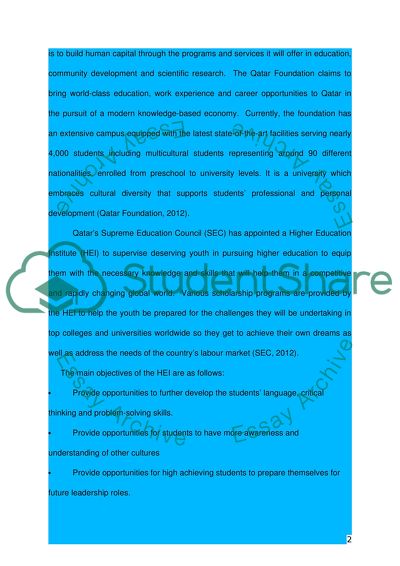Cite this document
(“Higher education in Qatar Research Paper Example | Topics and Well Written Essays - 6250 words”, n.d.)
Higher education in Qatar Research Paper Example | Topics and Well Written Essays - 6250 words. Retrieved from https://studentshare.org/education/1399473-report-about-higher-education-in-qatar
Higher education in Qatar Research Paper Example | Topics and Well Written Essays - 6250 words. Retrieved from https://studentshare.org/education/1399473-report-about-higher-education-in-qatar
(Higher Education in Qatar Research Paper Example | Topics and Well Written Essays - 6250 Words)
Higher Education in Qatar Research Paper Example | Topics and Well Written Essays - 6250 Words. https://studentshare.org/education/1399473-report-about-higher-education-in-qatar.
Higher Education in Qatar Research Paper Example | Topics and Well Written Essays - 6250 Words. https://studentshare.org/education/1399473-report-about-higher-education-in-qatar.
“Higher Education in Qatar Research Paper Example | Topics and Well Written Essays - 6250 Words”, n.d. https://studentshare.org/education/1399473-report-about-higher-education-in-qatar.


